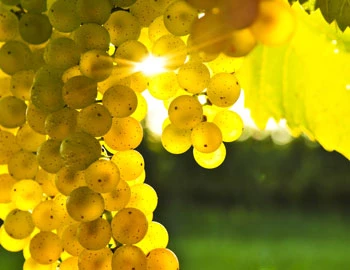Pouilly-Fuissé en Cénan 2022
AC, Domaine Mathias, 750 ml

| Grape variety: | Chardonnay |
| Producer: | Domaine Mathias / Mathias Gilles |
| Origin: | France / Bourgogne / Mâconnais |
| Other bottle sizes: | |
| Other vintages: |
Description
In the Mâconnais (Burgundy), lies the renowned appellation "Pouilly- Fuissé", which produces mineral and fruity Chardonnays. This organic Burgundy exudes notes of ripe, sweet citrus fruits, white flowers and a fine minerality on the nose. On the palate, the white wine is fresh yet harmonious with structure and nuances of yellow stone fruit and the sweet scent of honeysuckle, accompanied by some pear and buttery brioche. A wine that beautifully represents both the grape variety and the terroir.
Attributes
| Origin: | France / Bourgogne / Mâconnais |
| Grape variety: | Chardonnay |
| Label: | Vegan, Certified organic or biodynamic wine |
| Ripening potential: | 3 to 4 years |
| Drinking temperature: | 10 to 12 °C |
| Food Pairing: | Apéro riche, Baked egli fillets with tartare sauce, Whitefish fillets à la meunière, Asparagus specialities |
| Vinification: | fermentation in wooden barrel |
| Maturation: | partly in wooden barrel/foudre, on the yeast |
| Volume: | 13.5 % |
| Note: | Contains sulphites |
Chardonnay
King or beggar?
Hardly any variety of vine shows such a broad spectrum of quality as the Chardonnay. Its wines range from faceless neutrality to breath-taking class. It is an extremely low-maintenance vine, which explains why it is grown around the world – even in places where it probably should not be. The aromas of the Chardonnay variety are not very pronounced: a bit of green apple, a little hazelnut; in warmer latitudes, also melon and exotic fruits. The wines are often defined by maturing in casks. They develop more or less subtle notes of butter, toasted bread and vanilla. The grapes achieve their highest expression in their region of origin, Burgundy. Its heart beats in the Côte de Beaune: one might think of the plant growth of Meursault or Puligny-Montrachet. With their finesse and complexity, they can survive for decades. Chardonnay also achieves first class in some Blanc-de-Blancs champagnes. It additionally yields great wines in the Burgundian Chablis, and increasingly in Australia and Chile. A simple rule of thumb for pairing with food: When butter and cream are involved, you cannot go wrong with Chardonnay.

Mâconnais
Mâconnais: Chardonnay country
Around 7,000 hectares are planted with vines in the Mâconnais, close to 75 percent of which are Chardonnay. The Mâconnais is thus the most significant Chardonnay growing area in Burgundy in terms of numbers. Although it is the southernmost white wine area in Burgundy, distinctively light, crisp wines originate here. Thanks to improvements in quality in the vineyard and cellar, the quality of the wines from the Mâconnais has also increased markedly in recent years.

Bourgogne
Burgundy: home of the crus
Burgundy and Bordeaux are France’s most prestigious wine regions. Nonetheless, they are completely distinct in character: while Bordeaux, as the land of the chateaux, enjoys an aristocratic image, Burgundy has retained its rustic agrarian structure. Burgundy stretches for over 200 kilometres, from Dijon in the north to Lyon in the south. In a highly complex jigsaw of the most diverse of terroirs, Chardonnay and Pinot Noir demonstrate the subtle ways in which they embody their sources.

France
France – Philosophy in a bottle
According to French philosophy, wine should be an expression of the soil and climate. They use the word “terroir” to describe this. Terroir makes every wine different, and many especially good. French wine is regarded worldwide as an expression of cultural perfection. The French believe that humans are responsible for the quality of the berries, the vine variety for their character, and nature for the quantity. This philosophy can be expressed succinctly as: “the truth is the vineyard, not the man.”



